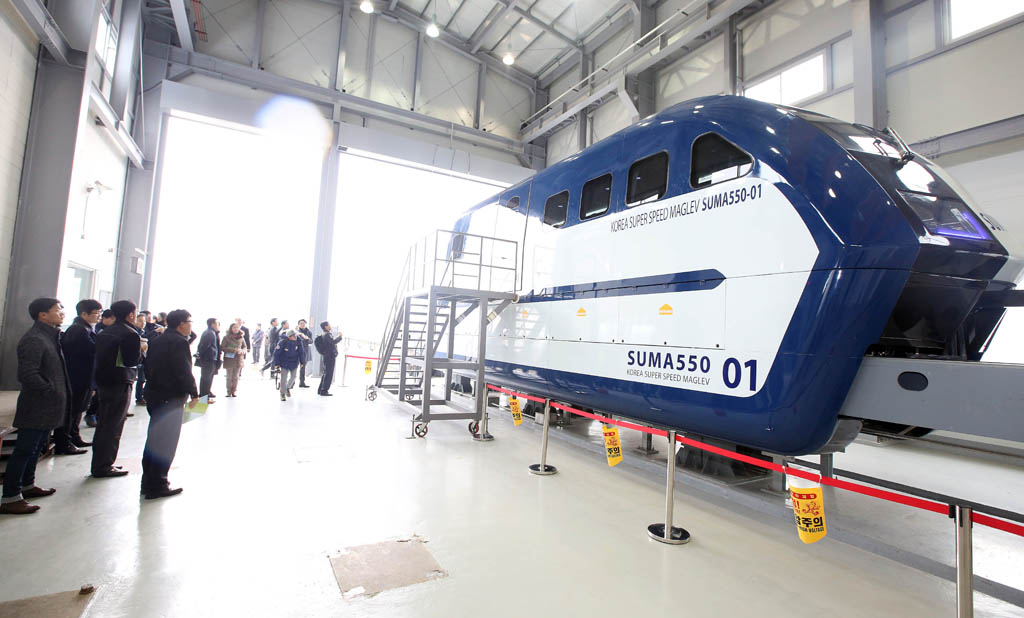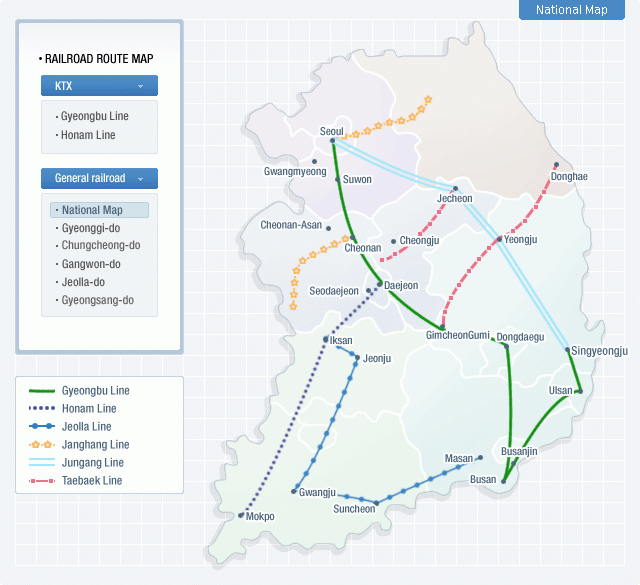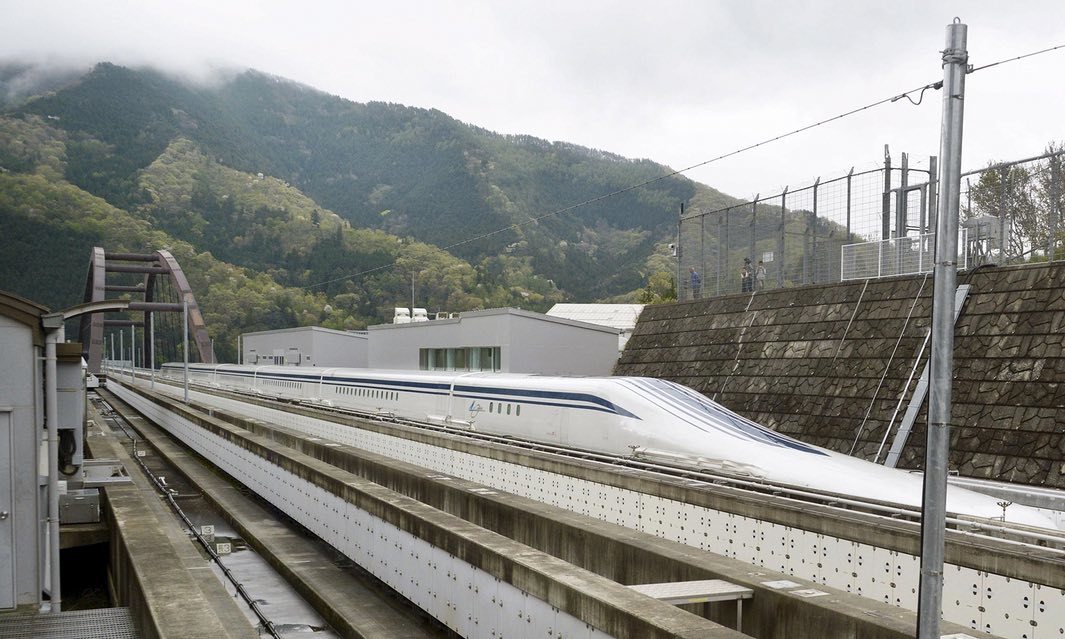South Korea is developing its Hyperloop

A group of journalists and officials from the Ministry of Land Resources, Infrastructure and Transport examines the experimental maglev SUMA550 at the Osong test site in the north of Chuncheon Namdo province. Photo: KRRI The
Korean Railways Research Institute (KRRI) has announced plans to develop a high-speed train that can potentially accelerate to 1,000 km / h, almost to the speed of sound in air at sea level (1192 km / h). The train itself will move almost in a vacuum — in a low-pressure pipe, like a Hyperloop.
Thus, South Korea has joined several countries and private companies that are trying to implement the idea of Ilona Mask .
For this complex project, the KRRI State Institute will join forces with other research groups and specialists from Hanyan University . Over the next three years, a joint research team will explore the possibilities of using existing technologies in this area. It is possible that Koreans will be able to develop a technical solution that exceeds the existing prototypes from Hyperloop One, Hyperloop Transportation Technologies (HTT) and TransPod.
“We hope to create a super-fast train that will travel through the advanced low-pressure tunnel at lightning speeds in the near future,” a KRRI spokesman said optimistically in a press comment. In previous years, the institute's specialists developed and put into production experimental trains HSR-350X and HEMU-430X. The second of them holds the speed record of 421.4 km / h, set on March 31, 2013. After this record, South Korea became the fourth country in the world, which managed to accelerate its trains faster than 420 km / h, joining Japan (she was the first to do so in 1979), France (1989) and China (2003). The rest of the countries are still lagging behind in the technical development of rail transport.
Why does South Korea need such fast transportation? Korean KDDI specialists hope that the new superhigh-speed train will reduce travel time between the largest cities of the country Seoul and Pusan by half an hour. These cities with a population of 10.1 million and 3.4 million people are at a distance of 325 km in a straight line. By Russian standards, this seems a short distance, but these cities are located at opposite ends of the country.

In the future, if South Korea suddenly merges back with the DPRK into one country, it will be possible to build a tunnel to Pyongyang. The distance from Busan to Pyongyang is 530 km in a straight line, and the way in a straight line passes just through Seoul. So, Hyperloop technologies will be fully used internally. Although the use here can be viewed more as a run-in and testing of the technology that is supposed to be licensed and sold abroad.
The fastest trains
At present, the fastest trains in the world — the Maglevs — are moving on the principle of magnetic levitation. They are held above the road bed and controlled by the strength of the electromagnetic field. Due to the absence of friction between the train and the surface of the canvas, such trains can accelerate faster than 500 km / h. The record was set by the Japanese superconducting maglev L0 of the JR Central company, which reached a speed of 603 km / h on April 21, 2015 , breaking the 2003 record at 581 km / h. Surprisingly, the previous record of 581 km / h did not belong to the Maglev, but to the French TGV high-speed electric train , which travels on ordinary wheels (although the TGV has few wheels to reduce friction).

Japanese maglev L0
Although the maglevs do not spend energy on friction with the surface of the canvas, but they have to spend a huge amount of energy to overcome the resistance of the air. In addition, movement in open air is a danger to the people and animals around you and to the train passengers themselves. Hyperloop tunnel solves this problem.
The proposed Hyperloop idea, Ilon Musk, may have plans to use this technology on Mars, where the density of the atmosphere is coincidentally the same as in the Hyperloop tunnels (approximately 1% of the Earth's). That is, on Mars, Hyperloop can move without any tunnels.
Hyperloop Perspectives
It seems that, with the suggestion of Ilona Mask, Hyperloop technology really went to the masses: “Many countries, such as the USA, Canada and China, are fighting for leadership in this futuristic technology,” said a representative of the Korean Railways Research Institute. “And we will also try to get ahead of our global competitors.”
The Korean project has every chance of success, because the state will be involved in the project and much research resources are attracted. For comparison, the American Hyperloop One and Hyperloop Transportation Technologies are private and public initiatives, which clearly slows down the pace of research and engineering. The closest to the implementation of the plan now is Hyperloop One. She is the only one who has already built a full-sized prototype train and an experimental tunnel.

Photo: Reuters / Steve Marcus
In May 2016, Hyperloop One successfully tested the undercarriage of a Hyperloop train on a 1-km-long section. During tests in the desert north of Las Vegas, a system weighing 600 kg was able to accelerate to 100 km / h in just 1.1 seconds (with air resistance), with the ability to accelerate to 640 km / h. The acceleration was 2.5G.
The first Hyperloop One experiments at full speed of 1100 km / h should be held in early 2017.
Managers of Hyperloop One are trying to conclude in advance preliminary contracts for the construction of high-speed highways in different countries, including Finland, Sweden, Holland, Switzerland, Dubai, the United Kingdom, the United States and Russia .
